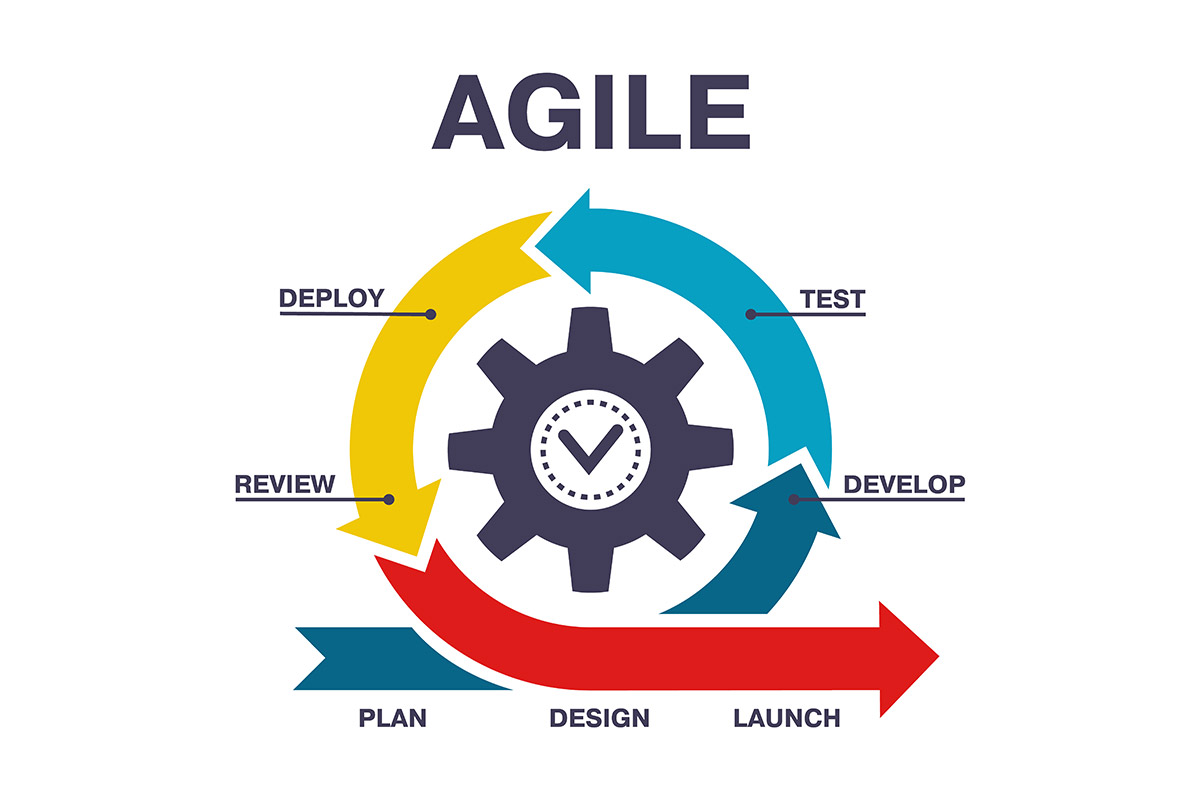Agile methodologies are known to emphasize individuals and interactions over processes and tools. Also, these methodologies stress customer collaboration over contract negotiation. Therefore, when companies incorporate agile methodologies in their initiative, it iteratively improves software development by using customer feedback to converge on solutions. However, companies often lack clarity on which functions should be reorganized into multidisciplinary agile teams and which should not. Not only this, but a few techies are also of the opinion that incorporating agile methodologies in their various business initiatives may be a solution for developing software projects that suffer from the age-old development problems of slipped schedules and ballooning budgets.
In recent years, the agile approach has gained tremendous significance in the field of software development due to the fastness that this approach brings to the life cycle of software development. A few companies are born agile, and a few companies are making the transition from traditional hierarchies to more-agile enterprises. The companies make the transition or scale up to agile thinking that it would bring significant benefits to the organization. However, managers or leaders or businessmen, or stakeholders of the company should be aware that agile methods aren't well suited to some activities/initiatives. That being the case, agile methodology can be incorporated into the company's initiatives if it's only best suited.
What are the benefits of incorporating Agile Methodology?
The project developers felt that traditional methodologies are inflexible for developing systems having uncertain and dynamic requirements. Meanwhile, agile methodologies flourished and became increasingly popular because of the ability to accommodate changes based on feedback during the software development life cycle. Let's understand the benefits of Agile methodologies and why you should be incorporating them into the initiatives of your organization:
- Agile manifesto - It is preferred by business professionals because of the Agile manifesto which states the following:
- Individuals and interactions over processes and tools
- Working software over comprehensive documentation
- Customer collaboration over contract negotiation
- Responding to change over following a plan.
- Customer Engagement - In traditional methodologies, the project team meets the customers only at the beginning and end of the project. On the other hand, the project team is in constant touch with the customers throughout the project in an agile environment - this ensures that the work is on track and the outcome will be closest to the customer's requirements.
- Greater Flexibility - There is no or minimum scope for changes while using the traditional approach to project management. However, while using the agile approach, changes can be accommodated with minimal effort and not-so-significant increases to both the project cost and schedule.
- High-quality products - Since they are fully aware of the customer's requirements, agile project teams can deliver high-quality products. These teams are well appreciated as they take care of clients' priorities.
- Sprint Planning - The agile approach is based on a continuous development approach as it exhibits a workable product in short intervals rather than months to clients and develops the end product much faster based on feedback received from the client. This is possible because agile teams work in short iterations, known as sprints in the Scrum methodology. Since these teams plan their sprints, they can deliver the output much faster and achieve the set targets.
- Minimal risk - Following an agile approach ensures minimal risk of project failure - because the project team works based on continuous customer feedback. Therefore, the identification of large issues at the end date or during the delivery is not likely to happen when this approach is followed.
- Agile teams are considered best suited to innovation because they value more on adapting to change more than sticking to a plan. Moreover, this approach supports collaboration and continuous improvement which can lead to the discovery of new products, features, and ideas - wherever the agile teams are formed in the organization.
Framework for incorporating Agile development methodologies
Making a transition or incorporating Agile development methodologies should be a step-by-step process as it focuses more on flexibility and team collaboration rather than having the team follow a predetermined course. Once you have understood what the agile approach is and what are the benefits of incorporating that approach, you can decide if it is the right fit for your organization. Once you believe that it is the right choice, you can begin the agile transformation process. The below-mentioned steps can be followed if you wish to incorporate agile development methodologies in your company's initiatives:
Set your Vision and Scope
You should know what development methodology you are currently following and why you want to switch or integrate agile methodologies inside your organization. When you have a vision and scope of services that can be better achieved when agile is implemented, then make a clear list of objectives and results you would achieve at the end of this process to ensure no diversion. While deciding how to adopt an agile mindset inside the organization, try and include relevant stakeholders, product owners, and key product team members to discuss how it can be integrated. Moreover, it is important to confirm the scope of to-be agile processes and applications to be included.
Build Roadmap
When the objectives and vision are clear, the project team can draw a roadmap that will lead to the ultimate goal. You can adopt a strategy to integrate agile development methodology into your already existing methodologies. Mapping out to-be processes, roles, and responsibilities, and identifying existing controls will ease the process of building a roadmap. You can also fix various performance markers using a Gantt chart to measure your progress, organize your milestones and adjust accordingly.
Create and Train Agile Teams
When you know the employees of the organization better, you can organize them to form an agile team. Creating agile teams is just the first step and it is significant that the teams are trained in agile methodologies and scrum approach to make the transition seamless. Moreover, you can implement an organizational change management program that includes training, communications, and a change agent network to support the rollout. Make sure you encourage effective collaboration among team members to deliver the sprints on time.
Sprint Planning
The project team has the responsibility of sprint planning in collaboration with the product owner, other stakeholders of the product/service, and the scrum master. The project team should be involved in the sprint planning process. They can decide what can be done in a sprint and plan the entire project using sprints to prioritize and manage tasks.
Communicate regularly
In a team, designers and developers must be willing to constantly communicate and work closely to make the agile methodology work. It is a prerequisite to have regular communication within the team while incorporating agile into your system to periodically assess and achieve operational effectiveness and performance. You must facilitate regular feedback and course corrections in your team.
Sprint Reviews
This is an important course of action when you choose to incorporate an agile mindset in your organization. It is essential that you review what you have done at the end of the sprint period and exhibit it to your product owner or other stakeholders to gain insights into their opinion. Moreover, analyze gaps between existing controls and to-be Agile and DevOps control requirements. And make required changes to tools and processes in accordance if there is any diversion in the plan. If the sprint didn't go as per your plan, review, and plan how your next sprint must go on - this is a part of the retrospective sprint review stage.
You should remember that agile methodology can't be incorporated into your organization by following a set of rules or instructions. Applying agile to your system can be done in different ways depending on how your team best works together.
Will incorporating agile ensure success? - There is no straightforward answer to this question. Undoubtedly, agile methodologies are meant to endlessly refine your process and better your product. However, the idea of incorporating agile may fail if there are lack of resources, the unwillingness of a few team members to change, a lack of clarity, or any other possible reason. Therefore, it is pivotal to define what success for your organization is and how you wish to achieve it!











